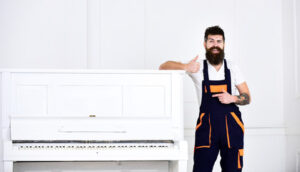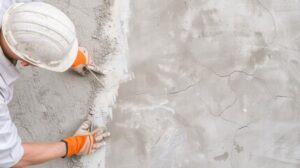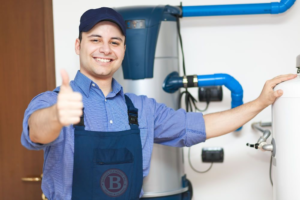Pianos are incredibly heavy and require specialized equipment and training to move properly. Trying to move a piano without this equipment can cause serious injury to the movers and damage to the instrument.

To avoid this, it is important to prepare properly before moving your piano. This includes securing the lid, disassembling the legs and pedal lyre assembly, and using proper furniture pads. Contact Charleston Piano Transport for professional help.
A piano is a complex instrument with many moving parts. Its internal components include wires, wooden frames and hammers that strike the strings of which they’re attached. The keys that you press raise those hammers, which in turn lift dampers designed to prevent the strings from rattling when they’re not being played. The combination of all of these internal workings results in a highly sensitive musical instrument that can be easily detuned during a long-distance move due to environmental factors like temperature and humidity.
Rapid changes in temperature and humidity can damage a piano, especially if it’s transported over long distances during the winter. Extreme heat can cause wood to swell and crack, while sudden shifts in moisture can create condensation that seeps into the strings. If these conditions are combined with the physical stress of a long-distance move, they can lead to unforeseen and irreparable structural and tonal damage.
Even shorter moves can have a dramatic impact on a piano’s sound quality. The most common culprits are climate changes from one building to another. These fluctuations can cause the wooden and metal components to expand or contract, resulting in changes in the tension of the piano’s strings and consequently a loss of tuning stability.
The best way to protect your piano from these risks is to store it in a climate-controlled facility. These facilities are specifically designed to preserve pianos by maintaining consistent temperatures and humidity levels, thereby protecting them from the harmful effects of environmental change during transport and storage.
If you can’t bring your piano into a climate-controlled environment, make sure to keep it away from walls and other objects that limit air circulation. Also, use a humidifier or dehumidifier during transport to control the humidity and help it adjust to its new surroundings. It’s also important to give the piano time to acclimate when it arrives at its destination before playing or tuning it. This adjustment period helps prevent a rapid climate change shock that can damage the interior components of the piano and cause it to go out of tune.
Water Exposure
Pianos are delicate instruments that require special care during transport and storage. They must be kept in stable, climate-controlled environments that avoid sudden temperature and humidity shifts – which can cause both immediate and long-term damage. These extreme weather conditions often lead to wood swelling, warping, and other serious issues that can threaten the integrity of the instrument’s intricate mechanics.
Direct exposure to water can be particularly harmful for pianos. It can swell and warp wooden components, degrade the internal action assembly, and weaken the glue that holds strings in place. Water damage also can stain and discolor the instrument’s exterior finish and interior components, and it can create ideal conditions for mold growth. Even minor water exposure can result in costly repairs and replacements.
Humidity fluctuations can be just as damaging as direct moisture exposure. Humidity control devices like humidifiers and dehumidifiers are essential for regulating a consistent level of moisture in the air around the piano. These devices can help prevent issues like wood expansion and contraction, brittle felt components, and tuning instability.
Pianos should be stored in an environment that is regulated to about 68 degrees Fahrenheit year-round. In addition to preventing warping and other problems, this temperature stability can help reduce the need for regular piano maintenance and repair.
Charleston’s diverse terrain and historic homes can present additional challenges for piano storage. Professional movers understand the unique challenges that these environments pose and are well equipped to ensure a safe, successful move. They utilize advanced techniques to safeguard their clients’ pianos during transportation, including specialized crates that maintain a constant temperature and humidity levels. Additionally, they use water-resistant and breathable blankets and covers to shield the piano from rain and other elements. They also take extra precautions to protect the piano from wet pathways by using covered dollies, ramps, and tarps during transitions in open areas. They also have access to a variety of trucks equipped with climate-controlled systems that allow them to maintain stable temperatures during transit. They are familiar with the unique challenges of navigating historic homes and tight streets, and they can work efficiently to minimize the impact of these environmental changes on the piano’s delicate mechanisms.
Excessive Heat
Pianos are intricate instruments that use wires, wooden frames, hammers, and dampers to produce sound. They have more than 10,000 tiny components that are made from materials like wood, felt, and leather. This means they are incredibly sensitive to environmental changes and even the slightest weather variations can damage them. Extreme heat causes wood to swell and can cause the glue that holds the strings in place to weaken. On the other hand, extreme cold can make felt parts crack and become brittle.
Humidity changes also have a major impact on pianos. Excessive humidity causes metals to rust and can lead to swelling of wood. Low humidity can cause wood to dry out and break down, which can also harm pianos. Different types of wood also have different rates of expansion and contraction. The resulting unequal pressures can cause mechanical and structural damage to the piano.
The best way to protect your piano during a move is to ensure you are working with a reputable company that utilizes specialized tools and techniques to minimize risks. For example, professional piano movers work only in climate-controlled trucks designed to maintain stable temperatures. They also wrap the piano in waterproof, breathable covers that shield it from moisture and direct sunlight. Additionally, they are careful to schedule moves during mild weather or cooler times of the day.
These steps help to prevent significant temperature and humidity shifts during a move, which can cause irreparable damage to the instrument. If you are planning a move, make sure to contact a trusted and experienced company who offers these services. Additionally, they can provide you with a wide range of moving accessories to protect your piano during transport, such as moving blankets, straps, and a piano board. These accessories will help to keep your piano secure and protected throughout the transportation process, whether it is across town or to a remote location. This will save you the cost of repairing any damage that could occur during the transport process.
Uneven Weight Distribution
Pianos are heavy and oddly shaped, making them difficult to maneuver during transport. The uneven distribution of weight makes them even more challenging to balance and move, which is why it’s important for professional movers to have access to the right equipment and tools. Dollies, ramps, straps, skid boards, and custom padding help keep the instrument stable, ensuring it doesn’t tip or fall during transport. They also know when to adjust a piano’s angle, avoiding sudden movements that can damage internal mechanisms.
Doorways, floors, and stairs are protected during the moving process, safeguarding your home from potential damage. In addition, specialized blankets and wraps protect the piano from scratches and impact during transit. If a piano has delicate carvings or finishes, extra protection is used to prevent any accidental damage. If necessary, a piano’s pedals and music stand may be removed to ensure it can fit through any tight spaces along the way.
As they progress, a team of movers will continue to assess their surroundings and make adjustments as needed. This is especially important if they encounter unexpected obstacles, like a narrow doorway or slick flooring. In these instances, a team leader will direct the movement of the piano until they can safely navigate the obstacle and continue on their journey.
During the move, a piano can easily sustain damage that affects its sound and playability. This is why it’s important for a team of professionals to have the right equipment and techniques to handle such a challenge.
Professional piano movers spend years perfecting their skills, honing a unique set of knowledge and abilities that allow them to maneuver even the most challenging instruments. Whether it’s navigating tricky staircases or maneuvering through tight doorways, the knowledge of how to manipulate a piano is essential. Attempting to move a piano without the proper training can result in costly damage and injuries.


